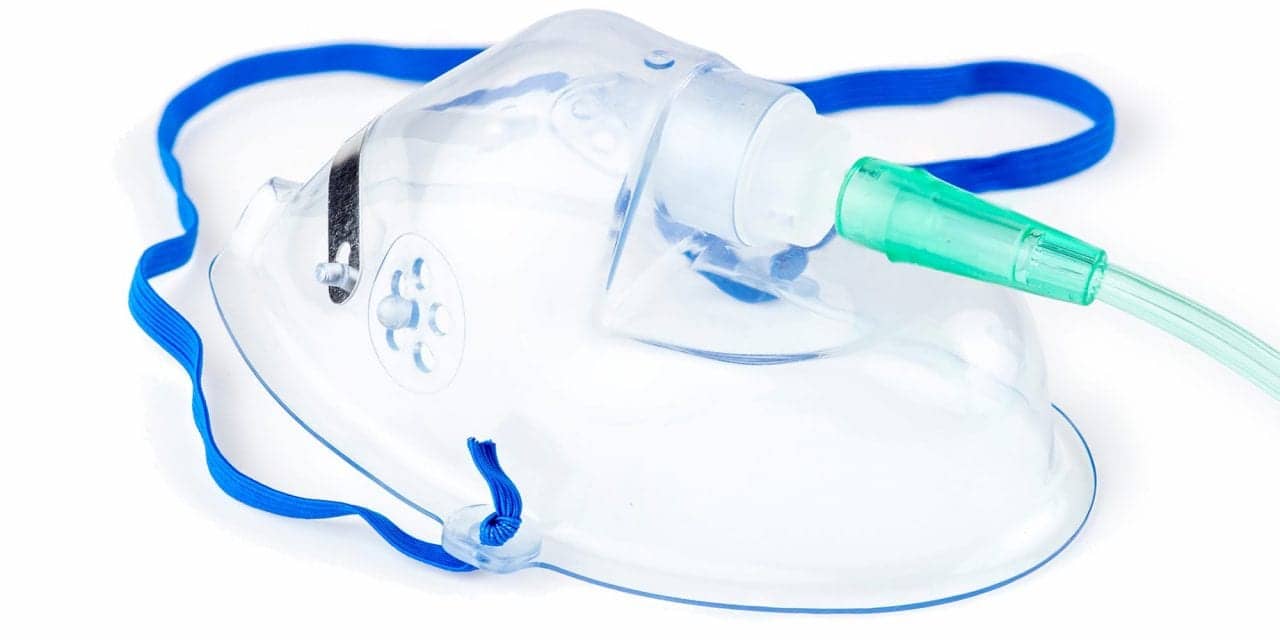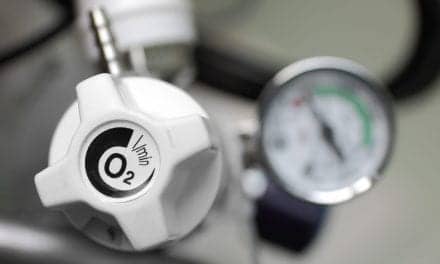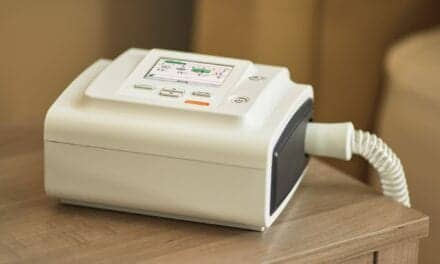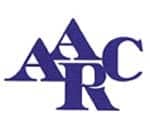The Centers for Medicare and Medicaid Services (CMS) implemented its new regulations governing home oxygen reimbursement on January 1, 2009. These changes, part of the larger Deficit Reduction Act (DRA), Medicare Modernization Act (MMA), and Medicare Improvements for Patients and Providers Act of 2008 (MIPPA), are posing significant challenges to both patients and home medical equipment (HME) providers. Without doubt, these issues are a cause of concern for respiratory therapists.
To frame the significance of this issue, it is important to note that there are approximately 1.5 million Medicare beneficiaries currently receiving home oxygen therapy at a cost to the Medicare system of $2.9 billion in 2008.1 The majority of these patients are suffering from COPD and have documented chronic hypoxemia. The benefits of home oxygen therapy for COPD patients are well known. Patients are living longer and can be maintained in the comfort of their own home with the use of home oxygen therapy. COPD is currently the fourth leading cause of death in the United States, and will become the third leading cause of death by the year 2020. The National Heart, Lung, and Blood Institute estimates that 24 million Americans have COPD, but only half have been diagnosed.2 This estimate portrays the significant increase in home oxygen therapy that will be required over the next several decades.

Reduce the Cost at Any Cost
CMS, which oversees both Medicare and Medicaid, has been under pressure to reduce costs associated with the Medicare program, and, over the last 20 years, there have been frequent changes and reductions in reimbursement for home oxygen equipment in an effort to control Medicare costs. Due to the significant increase in the number of Medicare beneficiaries in need of home oxygen therapy, the overall Medicare expense for home oxygen equipment and other types of HME has continued to grow. In addition, there is a perception that fraud and abuse among home oxygen suppliers are widespread. This has led CMS to scrutinize the usage and reimbursement of home oxygen equipment. The claims of fraud and abuse have been reported in the media over the last few years, and, unfortunately, they have portrayed an inaccurate description of the home oxygen reimbursement issue.
The crux of the reimbursement changes that became effective on January 1, 2009, is the 36-month cap for reimbursement of home oxygen. In addition to the 36-month cap, CMS reduced payment for oxygen therapy by 9.5%, bringing the monthly payment rate to $175.79. The rationale CMS used in determining this cap is that the average reimbursement for rental of an oxygen concentrator was $200/month, compared to the average purchase price of a concentrator of $587.1 The 2006 report prepared for CMS calculated that this was an excessive cost for equipment that requires “little maintenance.” CMS estimated that it would save $200 million in fiscal year 2010 as a result of this payment change.3
The specifics of the 36-month cap on home oxygen reimbursement are as follows4:
- Oxygen concentrator rental charge is paid for 36 months.4
- The 36-month cap is calculated on number of paid Medicare rental payments for a period of continuous use beginning January 1, 2006.
- The HME company that furnished the equipment must continue to service the equipment after the 36-month cap, even if the beneficiary relocates outside the supplier’s service area.
- The HME company is responsible for making arrangements for continued service of a patient who moves out of their service area.
- The HME company must continue to provide supplies, such as nasal cannulas, tubing, and humidifier bottles, after the 36-month cap.
- Payment for portable oxygen equipment is included in the 36 monthly rental payments. Once the 36-month cap is reached, the HME company may begin billing for portable oxygen contents.
- Portable oxygen contents are to be billed on the anniversary date of the oxygen equipment billing. A maximum of 3 months of oxygen contents can be delivered at one time
- The HME company cannot bill for portable oxygen contents if the patient uses a portable concentrator or transfilling system.
- “Reasonable useful life” of a concentrator is 5 years (60 months). At this point, the beneficiary may choose to obtain a new concentrator and a new 36-month rental period begins.
- Routine maintenance and service visits following each continuous 6-month period will be paid for 30 minutes of labor (approximately $30/visit).
- No payment will be made for nonroutine maintenance and service, such as unscheduled emergency visits, after the 36-month cap.
HMEs in Crisis
These significant changes to the oxygen reimbursement system have produced major challenges to the HME companies providing oxygen therapy equipment. The most immediate challenge noted is a reduction in revenue. The Office of Inspector General (OIG) reported that 22% of Medicare beneficiaries were on service for 36 months or longer on January 1, 2009.This means that there was a 22% reduction in income for HME companies across the country this past January. Depending on an individual company’s volume of oxygen patients, this reduction in revenue could be much higher or lower. Also, additional patients will cap each month and be dropped from the revenue stream. A compounding issue is the 9.5% cut in reimbursement that became effective on January 1.3 HME companies need to take into consideration the 36-month cap and the 9.5% cut when forecasting revenue moving forward.
The ongoing maintenance and service of the oxygen concentrators between the 36-month cap and the 60-month “reasonable useful life” are an unknown risk to HME companies. The amount of service and supplies that will need to be provided without reimbursement is an expense that cannot be estimated at this time. HME managers should collect data on these services to adequately plan in the future.
Another major concern for the HME companies is the patients who relocate. Similar to the maintenance and service issue, there is not sufficient data at this point to estimate the effect of patient relocation. In addition to the dilemma this presents to the HME company, patients are at risk if they relocate. The initial HME provider may not be able to find a provider who is willing to accept the patient in their new location. Since there is no reimbursement during the 4th and 5th year, the initial HME provider may need to provide payment to the new provider.
More Than Just Tanks and Concentrators
The important factor that CMS has not comprehended is that the HME companies provide more than just pieces of equipment. The staff of the HME company provides patient education on the use and maintenance of the equipment, responds to patient questions, assesses the home environment, provides repairs and maintenance, ensures that the patients comply with the physician’s order, and provides an emergency on-call service 24 hours a day. A 2006 survey by the American Association for Homecare (AAHomecare)1 identified that only 28% of the cost for providing oxygen is the equipment and refills. The remainder is from delivery, maintenance, patient education, and other overhead. In addition, CMS has required that HME suppliers be accredited by September 30, 2009. The CMS Quality Standards add another layer of requirements onto the HME companies. It does not seem logical that HME providers will be able to continue to provide this level of service within the new reimbursement model.
In addition to the cap and reduction in payment, the competitive bidding program is still a major concern for HME providers. Round one of the competitive bidding program is set to be rebid in fall 2009. CMS will be working over the summer to provide supplier awareness education and announcing the bidding schedule. After the bidding in fall 2009, CMS estimates that contract suppliers will be announced in summer 2010, and program implementation will begin in January 2011. Information regarding the further expansion of competitive bidding is not available at this time.
These issues continue to be fluid, with ongoing activity on the HME organization level and the federal government level. On May 12, 2009, Representatives Tom Price (R-Ga) and Heath Shuler (D-NC) introduced HR 2372, the Home Oxygen Patient Protection Act of 2009.This legislation would eliminate the 36-month payment cap for oxygen therapy equipment. The bill, described as “restoring oxygen equipment rental payments under Medicare,” would eliminate the language inserted in the Medicare statute by the DRA of 2005 that imposed the 36-month cap on Medicare payments for home oxygen.5 All industry interest groups, including AAHomecare and manufacturers, have provided comments on this legislation. In addition to the elimination of the 36-month cap, industry leaders are urging home oxygen therapy reform, including:
- exempt oxygen from competitive bidding;
- mandate a minimum set of services tied to patient needs;
- link patient need and reimbursement;
- establish a new class of Medicare providers—home oxygen therapy providers;
- provide for greater cost transparency;
- establish a home oxygen therapy advisory committee;
- enhance antifraud, abuse, and waste efforts; and
- establish strong patient protections.
Respiratory therapists and HME providers should stay tuned for the most current information regarding home oxygen reimbursement and related issues. It is essential to keep abreast of the latest news from CMS and the professional organizations. In addition, advocacy is important in order to adequately serve the home oxygen patient. Contacting one’s senator or congressman and having home oxygen patients contact their representatives can be a highly effective method to tell the whole story of the home oxygen issue.
RT
David Gourley, RRT, MHA, FAARC, is executive director of regulatory affairs, Chilton Memorial Hospital, Pompton Plains, NJ.
References
- Merrick A. A Medicare rule on paying for oxygen vexes patients. The Wall Street Journal. June 16, 2009:D1.
- COPD Foundation. Available at: www.copdfoundation.org. Accessed June 19, 2009.
- Weeks W. The new oxygen math. Home Care. 2009;32:32-7.
- Smith LK. Rule review: understanding the post-cap oxygen payment rules. Home Care. 2009;32:16-20.
- Invacare. Hot Buttons: Bill Introduced in House of Representatives that Would Repeal 36 Month Payment Cap for Oxygen. Available at: www.invacare.com/cgi-bin/imhqprd/genericContentTemplate2.jsp~. Accessed June 29, 2009.










